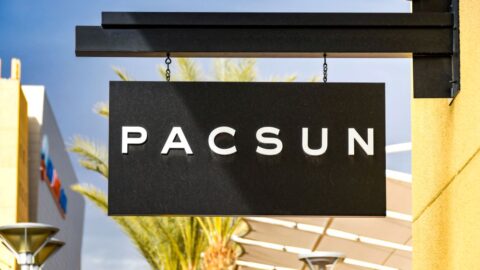Retail has become a tale of two realities. On the one hand, retail sales trended upward in August 2021, with specific economic stimulus measures apparently to credit. We know, based on our State of the In-Store Experience 2021 Report, that there remains strong consumer demand for brick-and-mortar retail experiences.
On the other hand, some major retailers have filed for bankruptcy in 2021. Overall economic growth could soon hit some snags and the ever-present challenges of competing in the retail sector have not gone anywhere. Retailers must enliven their in-store experiences now more than ever to remain on the crest of the retail swell.
Delivering a positive in-store journey hinges primarily — almost entirely — on what the customer wants. Boiled down to a single term, shoppers want an experience that only your stores can provide.
This is where we can help. With our State of the In-Store Experience (2021) report, we deliver insights straight from the 1,000 U.S. shoppers to you, the retailer. A few insights in particular seem useful to those who want to improve their organization’s in-store experiences.
Insight #1: There is still a genuine desire for the in-store retail experience.
Retailers have to face sales data head-on. Ecommerce saw its market share rise by about 3% during the height of the pandemic. This seemed like a significant blow to brick-and-mortar retail, were it not for an unavoidable truth: shoppers, by and large, did not want to do their shopping online — most felt compelled to, whether due to store closures, safety concerns or restrictions on movement and commerce.
When we asked shoppers how they want to shop, we found that many still gravitate toward the in-store retail experience: 48% of shoppers, given the choice, prefer shopping in a store rather than a digital storefront.
Brick-and-mortar shopping provides a reason to change clothes, get out of the house and engage with the world. In-store experiences are experiences as much as they are a way to obtain a new pair of running shoes or tonight’s dinner. Shoppers still have a hearty appreciation for experiential commerce, and so they still gravitate toward in-store experiences.
Insight #2: Shoppers are supporting brick-and-mortar retail in the most important way — they’re spending money.
It’s one thing for shoppers to say they like shopping in-store. Ultimately, though, a consumer’s measure of support is measured in dollars.
We found that 48% of consumers are spending more than half of their shopping budget in-store rather than with online retailers. This should be no surprise, as in-store retail is expected to account for the significant majority of $4.56 trillion in retail sales in 2021.
These combined findings suggest that shoppers aren’t just doing most of their shopping in retail stores, but they’re purchasing the most expensive items in-store. When it comes time to pony up for a substantial purchase — a couch, television, bicycle or any other big-ticket item — shoppers want to see, feel and experience the item before they buy.
In this respect, brick-and-mortar retail holds an enduring advantage over online commerce.
Insight #3: Retailers have realized that customer service is a key differentiator.
The 42% of shoppers who saw improving customer service over the past year aren’t imagining things. As the pandemic put unprecedented strain on retail revenues, a renewed focus on customer service was a logical way to win shoppers back.
Customer service has always been an indelible feature of the in-store experience. In lean times, the spotlight on customer service becomes even brighter. Based on shoppers’ impressions, many retailers have emphasized the importance of going the extra mile for shoppers.
Much in retail is beyond the retailer’s control, and the past year has been a tough reminder of this. Customer service is one of the factors that is truly within a retailer’s control, and so there is no reason to slack on customer care.
Today, customer service is more than the way that employees interact with shoppers. Service extends to the product information you provide (perhaps through digital signage), the checkout offerings in your stores (many shoppers prefer self-checkout), and everything in between.
Insight #4: In-store experiences have a measurable impact on your retail organization, for better or worse.
Retail organizations know, in a general sense, that their in-store experiences strike a certain mood in the customer, either enticing them to return in the future or shop elsewhere. But do you know exactly how important the in-store experience is to your organization’s bottom line?
We found that a positive in-store experience can garner:
- Increased Loyalty: 82% of respondents say a positive in-location experience makes them more likely to return to a physical establishment.
- Increased Online Spending: 61% of respondents say a positive in-store experience makes them more likely to buy from the brand online.
- Increased In-Store Spending: 64% say a positive in-store customer experience makes them more likely to spend more at their visit.
There is much debate about how to deliver positive in-store experiences. There should be no debate about the merits of doing so.
Conclusion
When you say “I could really go for pizza right now,” it’s generally implied that you mean good pizza. When shoppers say that they want to shop in-store, the same implication exists — shoppers want memorable, efficient, good in-store retail experiences.
Organizations that deliver these positive experiences through consistent customer service, strong product offerings, a variety of purchase and checkout options and other staples of the modern shopping experience will outlast economic uncertainty and other challenges.
Online retail has its warts. Customers generally do not want to wait for their goods if they can get them sooner, and shipping costs continue to rise. In-store retail remains a juggernaut, but brick-and-mortar is a crowded field. He who delivers the most well-rounded in-store experience will find longevity in the retail space.
Bobby Marhamat is the CEO of Raydiant — a digital signage and in-store experience solutions provider.








